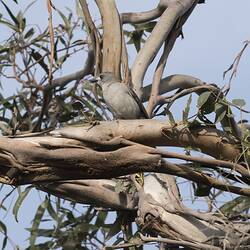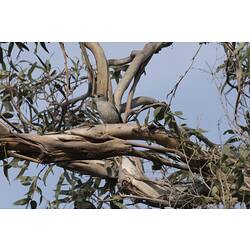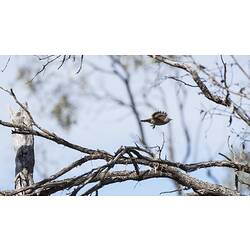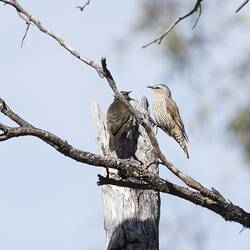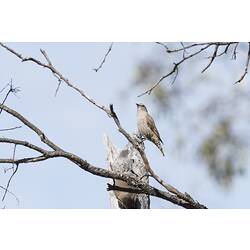General Description
Body plumage mainly grey, with olive-grey backs and grey-white cheeks and underparts. Wings and cheeks of juveniles are red-brown. Head to tail length of up to 25 cm. As their scientific name 'harmonica' suggests, they have a range of musical songs. Have a characteristic loud "pip-pip-pip-ho-ee" call that is commonly heard throughout its range.
Biology
Grey Shrike-thrushes are common but are heard much more frequently than they are seen. They have hundreds of melodious songs, and these can vary between regions. Grey Shrike-thrushes mate for life and defend the same breeding territory each year. These territories can be up to 10 hectares in size. Both males and females will build the nest, incubate the eggs and care for the chicks. They will forage for food on the ground amongst leaf litter and fallen logs, and on tree branches and trunks. Their diet includes spiders, insects, frogs, lizards and small mammals. They are also regular nest predators, eating eggs and chicks. They will also occasionally eat carrion, seeds and fruits. They are one of Australia's most widespread and distinctive songbirds.
Distribution
New Guinea. Mainland Australia and Tasmania except extremely arid central regions.
Habitat
Forests, woodlands, coastal scrubs and occasionally in parks and gardens.
More Information
-
Animal Type
-
Animal SubType
-
Brief Id
A predominately grey bird.
-
Colours
Grey
-
Maximum Size
25 cm
-
Habitats
-
Diet
Omnivore
-
Diet Categories
Insects, Spiders, Frogs, Lizards, Mammals, Carrion
-
Endemicity
-
Commercial
No
-
Conservation Statuses
CITES: Not listed, FFG Threatened List: Not listed, EPBC Act 1999: Not listed, IUCN Red List: Least Concern
-
Taxon Name
-
Common Name
Grey Shrike-thrush
-
Kingdom
-
Phylum
-
Subphylum
-
Class
-
Order
-
Family
-
Genus
-
Species Name
harmonica

